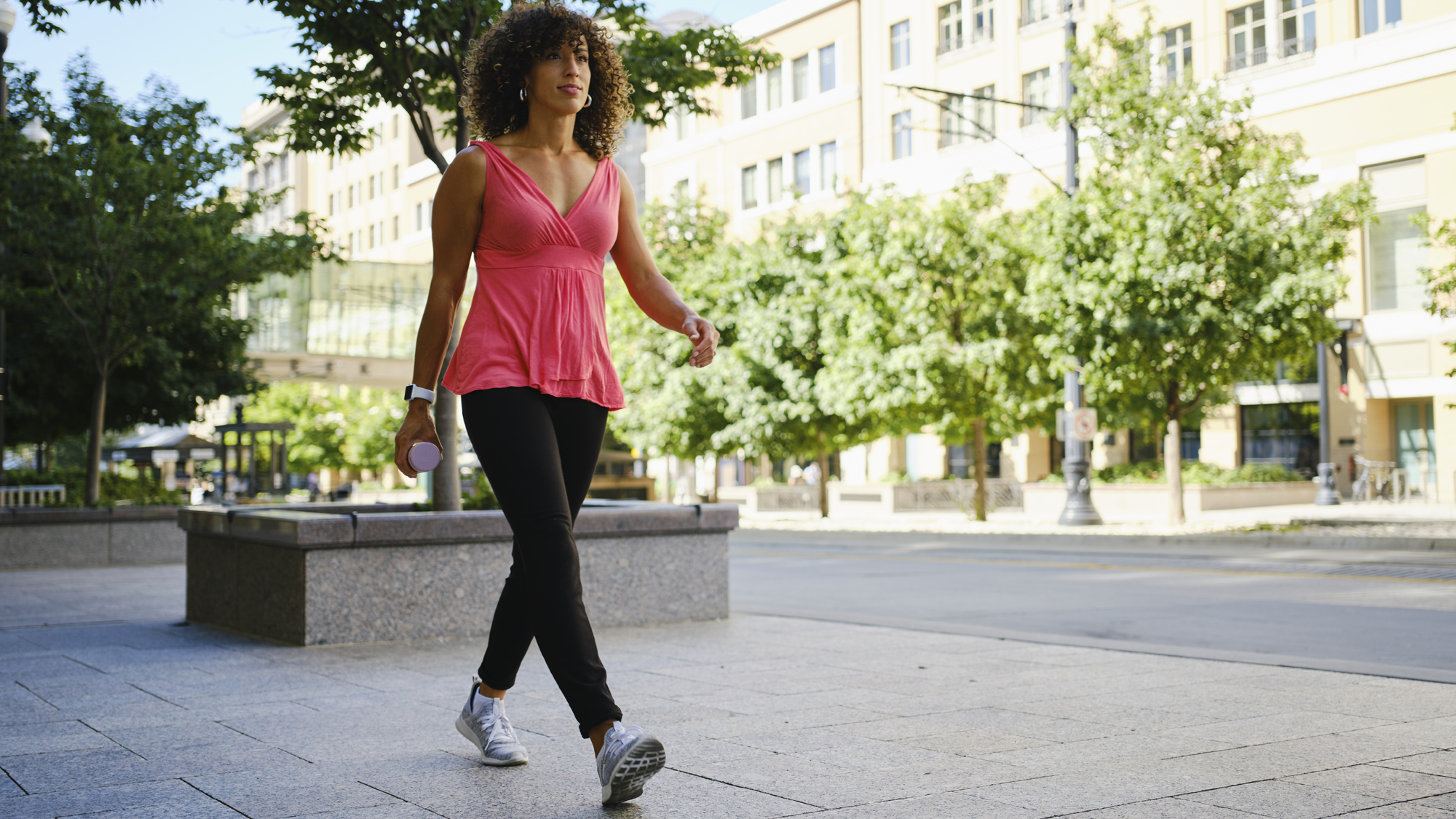How many steps should you take a day?
Wondering how many steps should you take a day? Is 10,000 enough? We take a look at the evidence


How many steps should you take a day? It's common to hear people talk about hitting their 10,000 daily step target, but does the science support that? According to researchers, you can get similar health-boosting results from hitting 6,000 a day instead.
Many of the best fitness trackers have your step goal automatically set to 10,000, though it's unclear where that number comes from. If you've got a packed schedule or have difficulty walking, hitting such a high number can be challenging each day.
Fortunately, research published in The Lancet has found that walking 6,000 steps each day might be enough to feel the benefits of walking, like improved joint health, increased metabolism, and a greater sense of wellbeing.
How many steps should you take a day?
The researchers examined 15 studies looking at the link between step count and risk of death from between 1999 and 2018, with a combined total of 47,471 participants of varying ages.
After analyzing the data, they found that "taking more steps per day was associated with progressively lower mortality risk." However, the effect levels off at a certain number of daily steps.
For older adults, those over 60, the team noted that the ideal range was between 6,000 and 8,000 steps, while for the under 60s, it was between 8,000 and 10,000 steps.
Interestingly, they also found that "recent physical activity might be more important for associations with mortality," suggesting that it's never too late to benefit from daily movement.
Start your week with achievable workout ideas, health tips and wellbeing advice in your inbox.
This isn't the first time researchers have shown that fewer steps may be just as beneficial, with several studies concluding that you can stay fit and healthy between 5,000 and 7,000 steps each day.
As there's no definitive answer to how many steps you should take each day, the important thing is to make walking, running, or other physical activity a part of your daily routine.
Where did the 10,000-step goal come from?
Truthfully, we don't know for sure, although there are a few theories. The most popular explanation comes from a Japanese marketing campaign in the 1960s for a pedometer known as Manpo-Kei.
When Catrine Tudor-Locke, author of the book Manpo-Kei: The Art and Science of Step Counting, spoke to Live Science, she noted that the name translates to "10,000 steps meter" but that this target wasn't based on science.
The Manpo-Kei pedometer was one of the first consumer-friendly ways to track your steps and exploded in popularity, engraining the 10,000-step goal into popular culture. When Fitbit launched its first smart fitness trackers, it also adopted the target.
It's now standard across smartphones and other fitness tracking gadgets, too. It can be a motivational tool, but it's not always achievable, especially since 10,000 steps in miles equates to almost five miles each day.

Is 10,000 steps a day good?
You might have mobility difficulties or find it hard to fit a longer walk around work, family, and social commitments. And researchers from the University of Copenhagen found that not hitting your goal can make you feel guilty and anxious.
To those of us who find it tough to hit that level consistently, it's practical to reduce the daily goal. That way, we avoid step guilt, find a more achievable target, and increase the chances that we'll hit our fitness goals.
Importantly, though, there's no evidence that 10,000 negatively impacts your health, just that the benefits start to plateau around 8,000 steps. Consequently, it's more about finding a target that works for your body and lifestyle.
You should aim to get a SMART goal, a specific, measurable, achievable, results-based, and time-bound target. This keeps your step challenge attainable, but there are plenty of other ways to set yourself up for exercise motivation, too.
Should you walk 10,000 steps a day for weight loss?
Walking is a great way to increase your physical activity and lose weight. Of course, there are other ways to get your step count up, which is why people often compare walking vs running for weight loss.
If you're after a low-impact way to drop pounds, then walking is a great activity you can easily incorporate into your daily by taking the stairs, walking to the store, or even taking a stroll to work.
Some research has even found that you can walk slower to burn more fat and lose weight sustainably. However you choose to get your steps in, it's crucial to make it a regular part of your routine.
So, while it's generally accepted that more physical activity will burn more calories and speed up your weight loss, you need to find a level that you can do regularly, and that makes you feel good, physically and mentally.

James is a London-based journalist and Fitness Editor at Fit&Well. He has over five years experience in fitness tech, including time spent as the Buyer’s Guide Editor and Staff Writer at technology publication MakeUseOf. In 2014 he was diagnosed with a chronic health condition, which spurred his interest in health, fitness, and lifestyle management.
In the years since, he has become a devoted meditator, experimented with workout styles and exercises, and used various gadgets to monitor his health. In recent times, James has been absorbed by the intersection between mental health, fitness, sustainability, and environmentalism. When not concerning himself with health and technology, James can be found excitedly checking out each week’s New Music Friday releases.